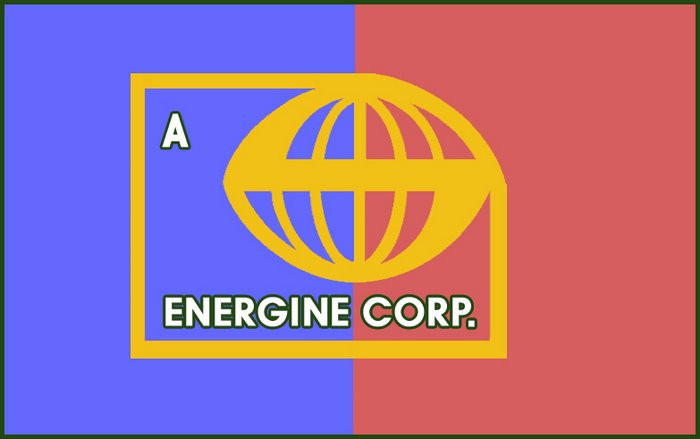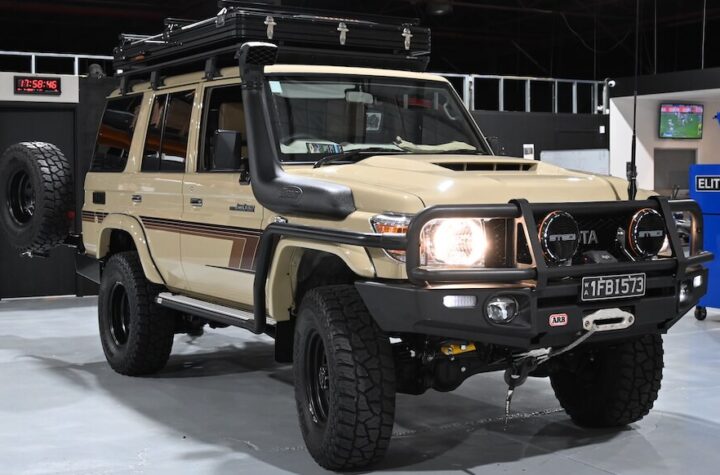
The South Korean Energine Corporation has developed a pneumatic-hybrid electric vehicle or PHEV Car. This car is a hybrid vehicle driven by a compressed air engine combined with electric motor. According to Energine, the PHEV CAR is driven by expansive force of compressed air and it also uses a battery driven motor when it is necessary. Compressed air engine is operated by two strokes – suction- expansion-exhaustion while the internal combustion engine is operated by four strokes – suction-compression-explosion- exhaustion.
The compressed air technology (CAT) engine is used whenever the car needs lots of energy (to start up and accelerate), and the electrical drivetrain is used to maintain velocity and cruise, requiring a lot less power overall than an all-electric cars. Sometimes, when it is considered optimal by the onboard computer, both engines are used at the same time. The compressed air engine is operated during the start, acceleration or going up a hill where the electric motor consumes a great deal of power rapidly. The compressed air engine converts back to the electric motor when the vehicle reaches a speed of 20-25 km/h.
As environmental concerns make alternative-fuel-powered cars a must, PHEV cars seem a feasible option. However, experts point out that air cars will only be as clean as the energy source used to compress the air that powers them, but it is a lot easier to clean up that process than to clean up the internal combustion engine.
Energine, along with French company Moteur Development International, are the two major players in the compressed-air engine technology market. The compressed air for the engine is generated by a small, battery-powered motor, which also supports the PHEV’s electric motor, and is stored inside a tank. According to Cheol-Seung Cho, the chief executive officer of Energine, the compressed air is used when the car needs a lot of energy, such as for starting up the car and acceleration.
The electric motor comes to life once the car has gained normal cruising speed. This cuts vehicle costs by up to 20 per cent as it does away with the need for a fuel tank, spark plugs and cooling systems.
Energine has filed patents in eight countries- the US, Canada, UK, Germany, France, Italy, Sweden and Korean for its compressed-air engine vehicle or CAV-2, in 1992.
The engine has been developed in such a way so that it can be used not only in automobiles but also in aircraft, ships, submarines, agricultural and industrial engines. The challenge however for Energine is to get a large manufacturer to use its technology in their vehicles.
Most automobile manufacturers have focused their efforts on environmentally-friendly vehicles in developing fuel-cell technologies or petroleum-electric hybrids. According to Energine, the advantages of a PHEV car are that the interiors are similar to a regular car, the maximum speed it can reach is 120 kilometers per hour. A PHEV engine can be retrofitted into a car and the pneumatic engine moves by 2 strokes (inhalation-exhaust).
Automotive Industries spoke to Cheol-Seung Cho, CEO of Energine Corporation.
AI: What is the status of your hybrid PHEV CAR? What has the commercial interest been?
Applied technologies to be converted or modified to Compressed Air engine Vehicle(CAV)/PHEV engine (20HP) attached with conventional lead battery from
800cc class Internal combustion engine (ICE) has remarkably been progressed through numerous road test for past decade, thus we could achieved to run with
120 km/hour speed for 30 minutes from the year 2000 up to recent year.
Practically, realization of PHEV car of maximum speed over 220 km/hour can be sufficiently possible if compressed air can be returned to the car by using
compressor that is plugged into a normal electrical network.
Anyhow, in order to commercialize genuine hybrid PHEV technology, completion of Social Infrastructure relevant to compressed air station and electricity charging
station at vulnerable area or advanced performance of air compressor and batteryshould be preceded
AI: Has any automotive major evinced an interest your PHEV technology?
There were several potential sponsors or investers who had evinced an interest the License grant/Joint Venture on CAV/PHEV technology after we submitted prototype car for Geneva, Paris. Seoul, Pusan Motor Show after 2001, but negotiations could not be afford to agree due to not only the lack of their comprehensive faculty on CAV/PHEV
technology together with unreasonable license grant fee beyond our belief but domestic and foreign circumstance upon this project was not come to maturity, moreover, we were absorbed in final development stage of 1 cylinder CA engine
AI: MDI has entered into an agreement with Indian company Tata Motors to develop air cars – does Energine have any such partners in Asia or elsewhere? Do you plan to sign up with such a partner in the near term future?
When we were ready to participate Geneva Motor Show, MDI invited us to attend their start road test of the prototype taxi of CA engine attached for 2 days, however,
through out the whole inventive patents details of Energine registered from 1996 to 2007, we have to point out that there is certain basis existence of the patent
infringement at MDI’s relevant patent and its principle, we shall cope with this stern reality through serious discussion with our international patent attorney.
Presently we have no valid partnership with Asian or elsewhere, but we are still planning to sign up with such Partners having open hearted philosophy on it if any
automotive major or investor would propose us to enter the reasonable License Grant/Joint Venture-Manufacturing project with pleasure at any time.
AI: Air cars have not captured the attention fuel-cell powered cars and gas-electric hybrid cars have – what do you think the reason for this is?
We consider that reasons are unconcern from the developed Countries’ Government in political, interests contradiction of Auto majors and Capitalists together with the lack of positive behavior from their Social Infrastructure.
Moreover, we have no room to meet commercialization of these technologies since Energine has been sustained as the research enterprise, however we are sure that
PHEV shall get over Fuel cell/Gasoline-electrical hybrid car with decisive support resulted from the fast advancement of Lithium ion polymer battery, specific generator and AC motor, so that, we can compete with fuel-cell powered cars or gas-electric hybrid cars, and people may have the time to choose PHEV car at present age we believe.
AI: Will Energine start the mass production of PHEV cars? What are your plans for using the technology for marine, space and other applications?
We can practically realize mass production of CAV Construction machineries of CA engine/PHEV cars of single or multi cylinder engines if appropriate amount of capital fund to build manufacturing factories would be invested from any major auto makers.
Regarding Marine application, all equipments of single or multi cylinder CA engine converted from single or multi cylinder ICE engine such as sea rescue and other sea
equipment in seabed, mining and chemical equipment in coal mine tracks or chemical plant explosives stored with sparkless, and belt conveyor in factories and airport can be widely used.
Also, practically 3 cylinder CA engine to be applied to Construction machineries such as Forklift, Payloader (Skidloader), Poclain excavator could be produced and
easily converted from 800 cc class ICE engine.
Concerning Military application, it is remarkable that PHEV engine can be applied for defense industry not only avoiding heat-seeking missile but auxiliary driving
force to submarine and battleship.
In case of CA Hybrid Fuel engine for Aerospace application, we believe that the use of CAHF engine applied “fluid dynamic theory” basis on “Bernoulli’s theorem” during cruise speed flight could sufficiently be available in accordance with the practicaltechnology development on lightweight material to substitute metallic air pressure tank withstanding over 300 bars.












More Stories
Is Your 70 Series Land Cruiser Underperforming? Here’s How to Unleash Its True Potential
What to Do After a Motorcycle Accident to Protect Yourself
Injured in a Motorcycle Crash? Talk to an Attorney Now